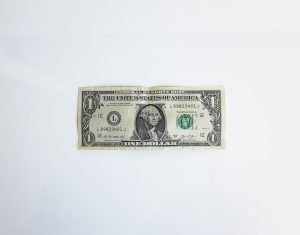Forex trading is a popular and lucrative investment opportunity for individuals looking to make money from trading foreign currencies. However, it can be intimidating for beginners who are not familiar with the market and the trading process. In this article, we will take a step-by-step approach to explain how to forex trade.
Step 1: Understand the Forex Market
The forex market is the largest financial market in the world, with a daily turnover of over $5 trillion. It is a decentralized market where currencies are traded 24 hours a day, 5 days a week. The market is made up of banks, financial institutions, and individual traders, and it operates globally.
To trade forex, you need to understand how the market works, including the factors that influence currency prices, the major currency pairs, and the different types of forex trading strategies.
Step 2: Choose a Forex Broker
The next step is to choose a forex broker. A forex broker is a company that provides a platform for traders to access the forex market. There are many forex brokers to choose from, and it is important to do your research and choose a reputable and regulated broker.
Factors to consider when choosing a forex broker include the trading platform, the minimum deposit required, the fees and commissions charged, the range of currency pairs offered, and the customer support provided.
Step 3: Open a Trading Account
Once you have chosen a forex broker, the next step is to open a trading account. Most brokers offer different types of accounts, including demo accounts, standard accounts, and premium accounts. A demo account allows you to practice trading without risking real money, while a standard account requires a minimum deposit and allows you to trade with real money.
To open a trading account, you will need to provide your personal and financial information, including your name, address, email, and phone number.
Step 4: Fund Your Trading Account
After opening a trading account, you will need to fund it with money to start trading. Most brokers offer different payment methods, including bank transfers, credit cards, and electronic wallets. Choose a payment method that is convenient for you and make a deposit.
Step 5: Choose a Currency Pair to Trade
The next step is to choose a currency pair to trade. The forex market consists of different currency pairs, including major, minor, and exotic pairs. Major currency pairs include the US dollar, euro, Japanese yen, British pound, Swiss franc, and Canadian dollar.
When choosing a currency pair, consider the volatility, liquidity, and spread of the pair. Volatility refers to the amount of price movement in a currency pair, while liquidity refers to the ease of buying and selling the currency pair. The spread refers to the difference between the bid and ask price of the currency pair.
Step 6: Analyze the Market
Before placing a trade, it is important to analyze the market to determine the direction of the currency pair. There are two main types of analysis: fundamental analysis and technical analysis.
Fundamental analysis involves analyzing economic and political factors that might affect the currency pair, including interest rates, inflation, employment, and geopolitical events. Technical analysis involves using charts and indicators to identify trends and patterns in the market.
Step 7: Place Your Trade
After analyzing the market, you can place your trade. To do this, you need to decide whether to buy or sell the currency pair. If you believe the currency pair will go up, you should buy it, and if you believe it will go down, you should sell it.
To place a trade, you need to enter the amount you want to trade, the currency pair, and the type of order. There are different types of orders, including market orders, limit orders, and stop-loss orders.
Step 8: Monitor Your Trade
Once you have placed a trade, it is important to monitor it to determine whether it is profitable or not. You can use different tools and indicators to monitor your trade, including charts, price alerts, and news feeds.
If your trade is profitable, you can close it to realize your profits. If it is losing, you can either close it to limit your losses or wait for the market to turn around.
Conclusion
Forex trading can be a profitable investment opportunity, but it requires knowledge, skills, and discipline. By following these steps, you can start trading forex and increase your chances of success. Remember to always do your research, manage your risk, and stay disciplined.





